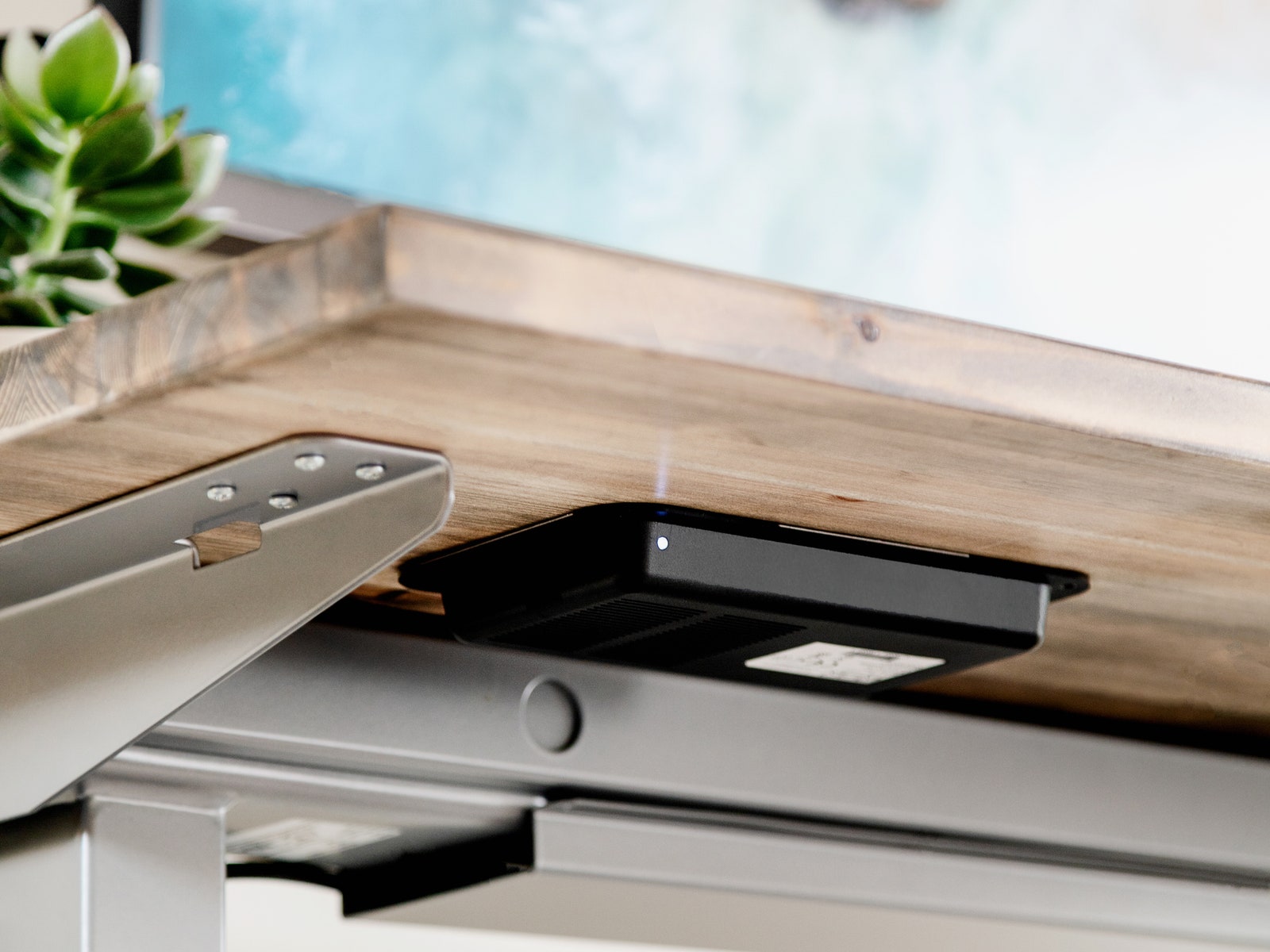Wireless mobile device charging is a cool idea and all, but there’s one big problem with it: You still have to have something on your desk or table to actually provide the charging power.
Wireless chargers typically come in the form of a little tray or a hockey puck upon which you rest your device, and while many of these have become quite stylish—I recently checked out one made of marble—they still take up a lot of space on your desk, doing nothing for you when they’re not in active use.
Kew Labs offers a nifty idea to fix this issue: It secrets a Qi charger underneath your desk or table so it’s functionally invisible, cleaning things up and minimizing clutter. Naturally, this approach has its share of challenges. The big one (and I’m simplifying here) is that wireless charging uses electromagnetic induction to generate a current inside coils of wire within your phone. This is a finicky process that requires not just the right alignment between the wire coils in the charger and those in the phone, but also the right amount of distance between them. Some phone cases—namely thick, “armored” ones—have been known to interfere with wireless charging because they’re just too big. Now imagine what the thickness of your desk is going to do to this delicate process.
Kew Labs’ solution to this has a few elements. First, the device has a total output of 30 watts, which is three or four times more than that of the typical charger, allowing it to power through that oak plank you call a workspace. Also, the device offers two settings that adjust its power output based on the thickness of your desk. A tiny DIP switch on the unit lets you select one output level for desks 18 to 21 millimeters in thickness, another for desks 22- to 25.4-mm thick. (A simple scale on the side of the packaging lets you roughly measure where you stand before you even open the box.) If your desk doesn’t fall in one of these ranges, you can’t use the device.
Placement is the toughest part of installing the UTS-1, because once you peel and stick the four pieces of adhesive tape to the underside of your desk, that’s pretty much where it’s going to stay. (Small screws are also included if you want the option to relocate it later, but drilling underneath your desk may be difficult.)

